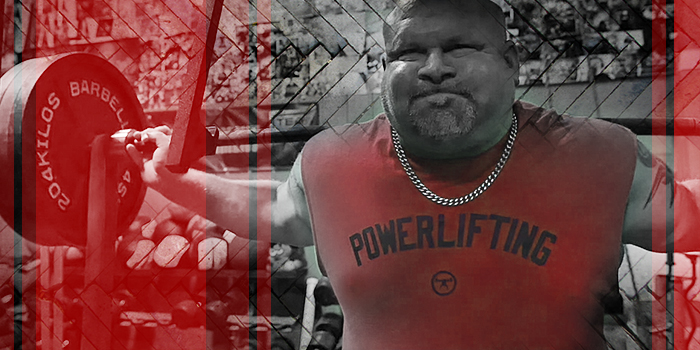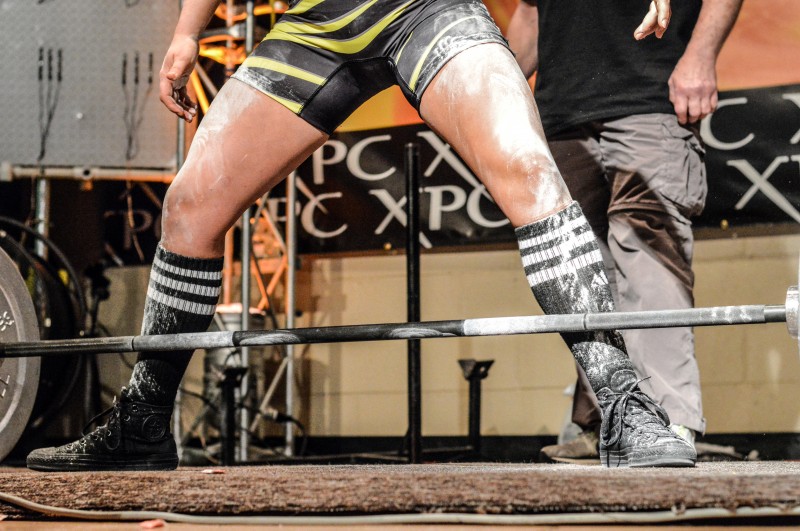
Recently, I had the pleasure of judging the SPF Ultimate Powerlifting and Bench Press Championship in Georgetown, Kentucky. There were approximately 10 full-power lifters and another 10 bench-only or push/pull lifters at the meet. Most of the lifters at this meet seemed to be local to the event and were of beginner to intermediate level. All but one of the lifters was lifting in the raw/unequipped class. As I sat in the side judge’s chair throughout the day, I saw many lifters make some common mistakes that are easy to correct:
- Not waiting for commands
- Depth
- Movement of the feet
- Hitching of the bar
- Form/foot position
- Rack height (squat and bench)
I'm going to explain each of these issues and tell you how to solve them.
Not Waiting for the Commands
As with most beginners, excitement got the best of a lot of lifters at this meet. Lack of experience can cause the lifter to forget about the rack and press commands on the squat and bench. Just as important as the lift, waiting for these commands is vital to the passing of the lift. If you are entering in your first meet or it has been a while since you last competed, make sure to practice meet conditions in training. Practice every command just like you'll have in the meet.
RECENT: Train to Think or Think to Train
Depth
There were a few lifters on Saturday that were called for depth. The primary cause of depth issues was a result of not sitting back. Many of the lifters were raw lifters with a close stance. As the lifters began the squat, most of them started by breaking at the knees instead of at the hips. As the lifter continued to descend, the knees continued to push forward, causing the height of the knee to lower. When this happens, the result is that the lifter must squat lower than needed to get the crease of the hip to break parallel with the top of the knee.
Movement of the Feet
In most federations—and there are variations from federation to federation—movement of the feet is prohibited. Some federations state that the lifter must have the feet flat on the floor, where others state if the lifter starts on the toes they must stay on their toes. What all federations have in common is that if the feet move around on the floor or lose contact with the floor then it is a red light and potentially a missed lift. With that being said, if as a lifter you lay on the bench and the bench height causes issues with your feet touching the floor, ask for assistance. When this happened for lifters in the meet, we used plates for them to position their feet securely on the floor.
Hitching of the Bar
When deadlifting, be aware that any downward motion of the bar is prohibited until the lifter receives the down command. The lifter can shake, twitch, and convulse, as long as the bar stays in an upward path. The bar can also stall, as long as there is no downward movement. My recommendation to lifters is to not rush the lift. Let it develop. Don’t get in a hurry. If the bar starts to slow, think about lifting the head/chin and squeeze the hips through.
Setup: Form/Foot Position
Don’t rush the setup. The way you set up the lift determines a lot about the lift. Poor setup can make it much more difficult than it needs to be. Uneven foot position can cause difficulty in reaching proper depth, and foot placement can also rob you of pounds on your deadlift as well. If the feet are not properly set then the bar can be too close or too far away at the start of the lift. Also, in the conventional deadlift, if the feet are too wide then the hand placement must also widen, resulting in a greater pulling distance.
Rack Height
This goes for both the squat and the bench. Rack height is another area that causes issues for many beginners lifters — and it is also easily fixed. On the bench, if the rack height is too high or low it can make it difficult to engage your lats. On the squat, if the rack is too high then the lifter must over-extend, which causes the core to not be tight. If it is too low then the lifter wastes important energy just trying to get the bar out of the rack. Take the time before the flight starts to walk to the platform and get your rack height before the start of the flight.
At some point in time, we all have encountered these problems, especially in the beginning of our lifting careers. If you are just starting out, keep these suggestions in mind the next time you compete.












1 Comment